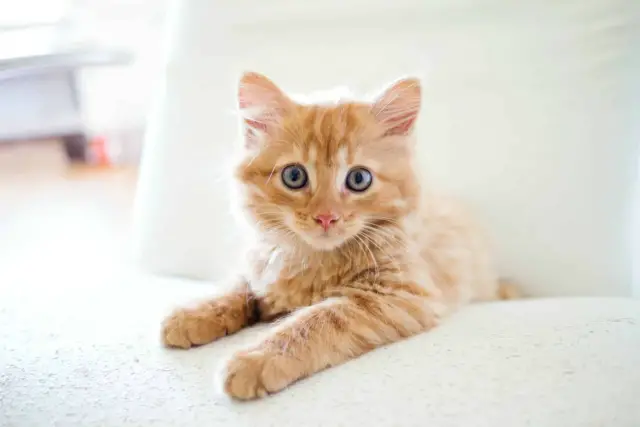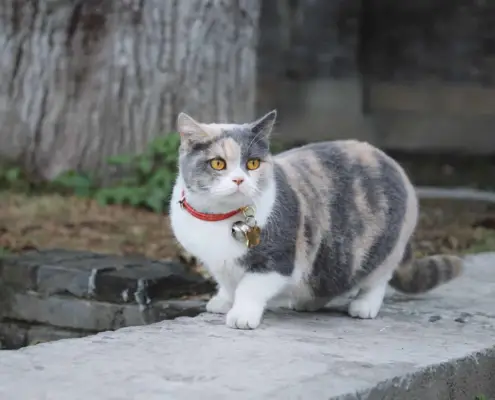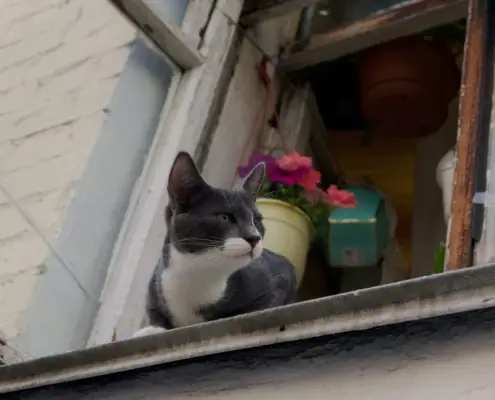
The dental anatomy of cats is a fascinating subject that plays a crucial role in their overall health and well-being. Understanding the structure and function of a cat’s teeth can help pet owners recognize potential dental problems and take appropriate measures to ensure their feline companion’s oral hygiene. This article will delve into the world of feline dental anatomy, shedding light on the number of teeth, types of teeth, their purposes, common dental issues, and how to provide adequate dental care for cats.
The Number of Teeth in a Cat’s Mouth
Cats possess a total of 30 teeth, which is fewer than humans but still sufficient for their dietary needs. Compared to humans, cats lack molars and premolars. Instead, they have a specialized dental formula that consists of 6 incisors, 2 canines, and 2 molars on each side of the upper and lower jaws. This arrangement enables cats to efficiently catch and tear their prey.
Types of Teeth in a Cat’s Mouth
- Incisors: Located at the front of the mouth, incisors are small, sharp teeth that cats use for grooming and nibbling on small objects.
- Canines: Also known as fangs, canines are long, pointed teeth positioned on each side of the incisors. These teeth are crucial for grasping and holding prey.
- Premolars: Situated behind the canines, premolars have a flat surface with cusps that aid in shearing and cutting meat. Cats have three upper and two lower premolars on each side of the mouth.
- Molars: Although cats lack true molars, they have a pair of carnassial teeth on each side, which are highly specialized for slicing through tough meat. These teeth are essential for their carnivorous diet.
The Purpose of Each Type of Tooth
Each type of tooth in a cat’s mouth serves a specific purpose in their feeding habits and overall dental health. The incisors allow cats to groom themselves, remove debris from their fur, and nibble on smaller objects. Canines are designed for capturing and holding prey, while premolars assist in cutting and shearing meat. The carnassial teeth, located at the back of the mouth, are responsible for slicing through flesh and tendons, enabling cats to consume their meals effectively.
Common Dental Issues in Cats
Dental problems can arise in cats, just like in humans. One of the most common issues is periodontal disease, which affects the tissues surrounding the teeth. Plaque and tartar buildup can lead to gum inflammation, tooth decay, and even tooth loss if left untreated. Other dental problems in cats include tooth fractures, abscesses, and oral tumors. It’s crucial for pet owners to be aware of these issues and take proactive steps to prevent or address them.
Signs of Dental Problems in Cats
Recognizing the signs of dental problems in cats is essential for timely intervention. Some common indications include bad breath, excessive drooling, difficulty chewing, pawing at the mouth, bleeding or inflamed gums, and visible tartar or plaque buildup. Cats may also display behavioral changes, such as decreased appetite or increased irritability, due to oral discomfort. Regular observation and examination of a cat’s mouth can help identify these signs early on.
Dental Care for Cats
Maintaining proper dental hygiene is vital for a cat’s overall health. Pet owners can implement several measures to ensure their furry companions have healthy teeth and gums. One crucial aspect is regular tooth brushing. While it may take time for cats to get accustomed to this practice, starting at a young age and using specially formulated toothpaste for pets can help establish a routine. Additionally, offering dental treats or toys designed to promote oral health can aid in cleaning teeth and reducing plaque buildup.
How to Brush Your Cat’s Teeth
Brushing a cat’s teeth may seem like a daunting task, but with patience and proper technique, it can become a manageable routine. Start by gradually introducing your cat to the toothbrush and toothpaste, allowing them to sniff and taste it. Gently lift your cat’s lips and brush their teeth using a soft-bristled toothbrush or a finger brush. Focus on the outer surfaces of the teeth and use gentle circular motions. Gradually increase the duration of brushing sessions until you can brush all the teeth. Always reward your cat with praise and treats to create a positive association with tooth brushing.
Professional Dental Cleanings for Cats
While regular at-home dental care is crucial, professional dental cleanings by a veterinarian are also necessary to maintain optimal oral health in cats. These cleanings involve a thorough examination of the cat’s mouth, removal of plaque and tartar, and polishing of the teeth. The cat is placed under general anesthesia to ensure their safety and comfort during the procedure. Professional dental cleanings should be scheduled at least once a year or as recommended by the veterinarian.
Conclusion
Understanding feline dental anatomy is essential for providing proper dental care and maintaining the overall health of cats. With 30 teeth, including incisors, canines, and specialized premolars and molars, cats are well-equipped for their carnivorous diet. Regular dental care, including tooth brushing and professional cleanings, can help prevent common dental issues such as periodontal disease and tooth decay. By paying attention to the signs of dental problems and taking proactive measures, pet owners can ensure their feline companions have healthy teeth and gums, leading to a happy and healthy life.
If you enjoyed my article, I would appreciate you sharing it with your network.

Sima Ndlebe
Sima writes for CatBuzz. He is interested in Cats, Health and Fitness, and Entrepreneurship.
Published: 30 October 2023



